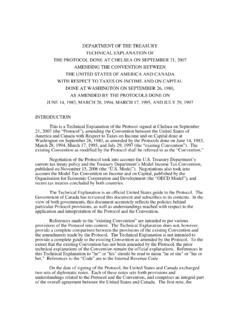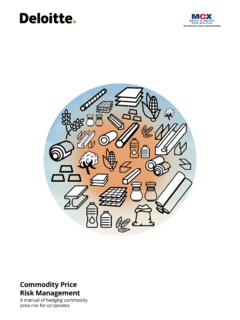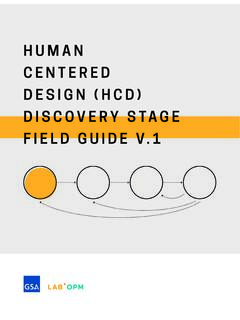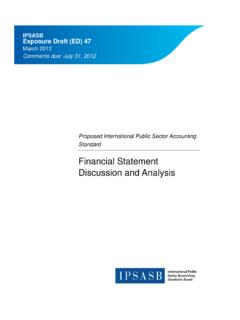Transcription of Tax Challenges Arising from the Digitalisation of the ...
1 OECD/G20 BASE EROSION AND PROFIT SHIFTING PROJECTTax Challenges Arising from the Digitalisationof the Economy Global Anti-Base Erosion Model Rules (Pillar Two)INCLUSIVE FRAMEWORK ON BEPSA keypartoftheOECD/G20 BEPSP rojectisaddressingthetaxchallengesarisin gfromthedigitalisationoftheeconomy. InOctober2021, over135jurisdictionsjoineda groundbreakingplantoupdatekeyelementsoft heinternationaltaxsystemwhichis nolongerfitforpurposein aglobalisedanddigitalisedeconomy. TheGlobalAnti-BaseErosionRules(GloBE) areakeycomponentofthisplanandensurelarge multinationalenterprisepaya minimumleveloftaxontheincomearisingineac hofthejurisdictionswheretheyoperate. Morespecifically,theGloBERulesprovidefor a co-ordinatedsystemoftaxationthatimposesa top-uptaxonprofitsarisingina jurisdictionwhenevertheeffectivetaxrate, determinedona jurisdictionalbasis,isbelowtheminimumrat e. Thisreportdelineatesthescopeandsetsoutth eoperativeprovisionsanddefinitionsoftheG loBERules.
2 Theserulesareintendedtobeimplementedaspa rtofa BASE EROSION AND PROFIT SHIFTING PROJECTTax Challenges Arising from the Digitalisationof the EconomyGlobal Anti-Base Erosion Model Rules (Pillar Two)INCLUSIVE FRAMEWORK ON BEPSFor more @OECDtaxOECD Tax | 1 TAX Challenges Arising FROM THE Digitalisation OF THE ECONOMY: GLOBAL ANTI-BASE EROSION MODEL RULES (PILLAR TWO) OECD 2021 OECD/G20 Base Erosion and Profit Shifting Project Tax Challenges Arising from the Digitalisation of the Economy Global Anti-Base Erosion Model Rules (Pillar Two) Inclusive Framework on BEPS PUBE 2 | TAX Challenges Arising FROM THE Digitalisation OF THE ECONOMY: GLOBAL ANTI-BASE EROSION MODEL RULES (PILLAR TWO) OECD 2021 This document and any map included herein are without prejudice to t he status of or sovereignty over any territory, to the delimitation of international frontiers and boundaries and to the name of any territory, city or area.
3 This document was approved by the OECD/G20 Inclusive Framework on BEPS on 14 December 2021 and prepared for publication by the OECD cite this document as: OECD (2021), Tax Challenges Arising from the Digitalisation of the Economy Global Anti-Base Erosion Model Rules (Pillar Two): Inclusive Framework on BEPS, OECD, Paris, Photo credits: Cover ninog OECD 2021 The use of this work, whether digital or print, is governed by the Terms and Conditions to be found at | 3 TAX Challenges Arising FROM THE Digitalisation OF THE ECONOMY: GLOBAL ANTI-BASE EROSION MODEL RULES (PILLAR TWO) OECD 2021 Foreword Digitalisation and globalisation have had a profound impact on economies and the lives of people around the world, and this impact has only accelerated in the 21st century. These changes have brought with them Challenges to the rules for taxing international business income, which have prevailed for more than a hundred years and created opportunities for base erosion and profit shifting (BEPS), requiring bold moves by policy makers to restore confidence in the system and ensure that profits are taxed where economic activities take place and value is created.
4 In 2013, the OECD ramped up efforts to address these Challenges in response to growing public and political concerns about tax avoidance by large multinationals. The OECD and G20 countries joined forces and developed an Action Plan to address BEPS in September 2013. The Action Plan identified 15 actions aimed at introducing coherence in the domestic rules that affect cross-border activities, reinforcing substance requirements in the existing international standards, and improving transparency as well as certainty. After two years of work, measures in response to the 15 actions, including those published in an interim form in 2014, were consolidated into a comprehensive package and delivered to G20 Leaders in November 2015. The BEPS package represents the first substantial renovation of the international tax rules in almost a century.
5 As the BEPS measures are implemented, it is expected that profits will be reported where the economic activities that generate them are carried out and where value is created. BEPS planning strategies that rely on outdated rules or on poorly co-ordinated domestic measures will be rendered ineffective. OECD and G20 countries also agreed to continue to work together to ensure a consistent and co ordinated implementation of the BEPS recommendations and to make the project more inclusive. As a result, they created the OECD/G20 Inclusive Framework on BEPS (Inclusive Framework), bringing all interested and committed countries and jurisdictions on an equal footing in the Committee on Fiscal Affairs and its subsidiary bodies. With over 140 members, the Inclusive Framework monitors and peer reviews the implementation of the minimum standards and is completing the work on standard setting to address BEPS issues.
6 In addition to its members, other international organisations and regional tax bodies are involved in the work of the Inclusive Framework, which also consults business and the civil society on its different work streams. Although implementation of the BEPS package is dramatically changing the international tax landscape and improving the fairness of tax systems, one of the key outstanding BEPS issues to address the tax Challenges Arising from the Digitalisation of the economy remained unresolved. In a major step forward on 8 October 2021, over 135 Inclusive Framework members, representing more than 95% of global GDP, joined a two-pillar solution to reform the international taxation rules and ensure that multinational enterprises pay a fair share of tax wherever they operate and generate profits in today s digitalised and globalised world economy. The implementation of these new rules is envisaged by 2023.
7 This report was approved by the Inclusive Framework on 14 December 2021 and prepared for publication by the OECD Secretariat. 4 | TAX Challenges Arising FROM THE Digitalisation OF THE ECONOMY: GLOBAL ANTI-BASE EROSION MODEL RULES (PILLAR TWO) OECD 2021 Table of contents Foreword 3 Abbreviations and acronyms 6 Executive summary 7 1 Scope 8 Article Scope of GloBE Rules 8 Article MNE Group and Group 8 Article Constituent entity 9 Article Ultimate Parent entity 9 Article Excluded entity 9 2 Charging Provisions 11 Article Application of the IIR 11 Article Allocation of Top-Up Tax under the IIR 12 Article IIR Offset Mechanism 12 Article Application of the UTPR 12 Article UTPR Top-up Tax Amount 13 Article Allocation of Top-Up Tax for the UTPR 13 3 Computation of GloBE Income or Loss 15 Article Financial Accounts 15 Article Adjustments to determine GloBE Income or Loss 15 Article International Shipping Income exclusion 18 Article Allocation of Income or Loss between a Main entity and a Permanent Establishment 19 Article Allocation of Income or Loss from a Flow- through entity 20 4
8 Computation of Adjusted Covered Taxes 22 Article Adjusted Covered Taxes 22 Article Definition of Covered Taxes 23 Article Allocation of Covered Taxes from one Constituent entity to another Constituent entity 24 Article Mechanism to address temporary differences 25 Article The GloBE Loss Election 26 Article Post-filing Adjustments and Tax Rate Changes 27 | 5 TAX Challenges Arising FROM THE Digitalisation OF THE ECONOMY: GLOBAL ANTI-BASE EROSION MODEL RULES (PILLAR TWO) OECD 2021 5 Computation of Effective Tax Rate and Top-up Tax 28 Article Determination of Effective Tax Rate 28 Article Top-up Tax 29 Article Substance-based Income Exclusion 30 Article Additional Current Top-up Tax 31 Article De minimis exclusion 32 Article Minority-Owned Constituent Entities 33 6 Corporate Restructurings and Holding Structures 34 Article Application of Consolidated Revenue Threshold to Group Mergers and Demergers 34 Article Constituent Entities joining and leaving an MNE Group 35 Article Transfer of Assets and Liabilities 36 Article Joint Ventures 37 Article Multi-Parented MNE Groups 37 7 Tax neutrality and distribution regimes 39 Article Ultimate Parent entity that is a Flow- through entity 39 Article Ultimate Parent entity subject to Deductible Dividend Regime 40 Article Eligible Distribution Tax Systems 41 Article
9 Effective Tax Rate Computation for Investment Entities 42 Article Investment entity Tax Transparency Election 43 Article Taxable Distribution Method Election 43 8 Administration 46 Article Filing obligation 46 Article Safe Harbours 47 Article Administrative Guidance 48 9 Transition rules 49 Article Tax Attributes Upon Transition 49 Article Transitional relief for the Substance-based Income Exclusion 49 Article Exclusion from the UTPR of MNE Groups in the initial phase of their international activity 50 Article Transitional relief for filing obligations 51 10 Definitions 52 Article Defined Terms 52 Article Definitions of Flow- through entity , Tax Transparent entity , Reverse Hybrid entity , and Hybrid entity 67 Article Location of an entity and a Permanent Establishment 67 6 | TAX Challenges Arising FROM THE Digitalisation OF THE ECONOMY: GLOBAL ANTI-BASE EROSION MODEL RULES (PILLAR TWO) OECD 2021 Abbreviations and acronyms CE Constituent entity ETR Effective Tax Rate GloBE Global Anti-Base Erosion IFRS International Financial Reporting Standards JV Joint Venture MNE Multinational enterprise OECD Organisation for Economic Co-operation and Development UPE Ultimate Parent entity | 7 TAX Challenges Arising FROM THE Digitalisation OF THE ECONOMY: GLOBAL ANTI-BASE EROSION MODEL RULES (PILLAR TWO) OECD 2021 Executive summary The Global Anti-Base Erosion (GloBE) Rules provide for a co-ordinated system of taxation intended to ensure large multinational enterprise (MNE) groups pay a minimum level of tax on the income Arising in each of the jurisdictions where they operate.
10 It does so by imposing a top-up tax on profits Arising in a jurisdiction whenever the effective tax rate, determined on a jurisdictional basis, is below the minimum rate. Chapter 1 defines the scope of the GloBE Rules. Chapter 2 determines the constituent entities in the group that are liable for any top-up tax and the portion of any top-up tax charged to any such entity . Chapters 3 and 4 set out the components of the effective tax rate calculation under the GloBE Rules. Chapter 3 determines the income (or loss) for the period for each constituent entity in the MNE Group and Chapter 4 then identifies the taxes attributable to such income Chapter 5 aggregates the income and taxes of all constituent entities located in the same jurisdiction to determine the effective tax rate for that jurisdiction. If the effective tax rate is below the minimum rate, the difference results in a top-up tax percentage which is applied to the jurisdictional income to determine the total amount of top-up tax.

















